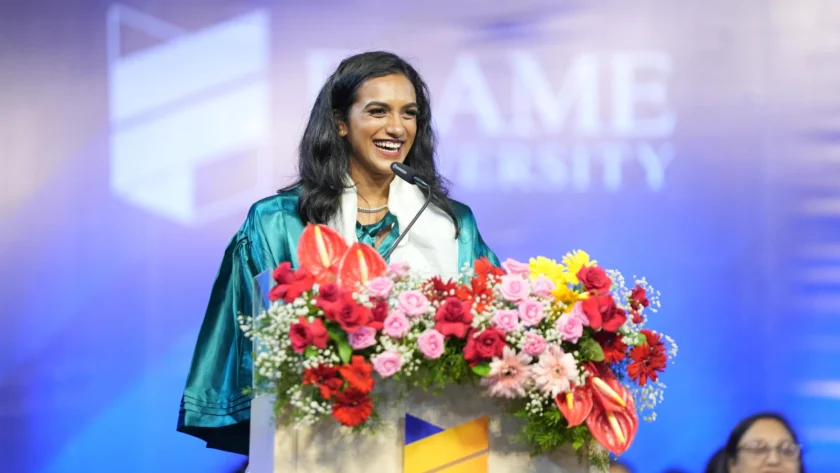Lucknow: Lucknow, the historic capital of Uttar Pradesh, has long been defined by its architectural elegance, cultural refinement, and culinary richness. But in recent years, the city has taken an unexpected turn. The sound of ghungroos and ghazals now shares space with the rhythmic thud of running shoes against the ground. A city known for its nawabi leisure is now waking up early—literally—to sprint, jump, and throw its way into a new identity: a rising hub for track and field in India.
For years, cricket and badminton ruled the sporting imagination of the city. Wrestling had its traditional strongholds. Athletics, on the other hand, survived in shadows—tucked away in fields with uneven surfaces and outdated equipment. Yet even in these modest corners, a quiet revolution had begun. At the R.D.S.O. Stadium, for instance, local runner Hasnain Agha trains every morning before sunrise, weaving through the soft-surfaced lanes in a ritual that marries discipline with aspiration. It’s not glamorous, but it is deeply determined.
Infrastructure, though still a hurdle, is inching forward. The Lucknow Metro and the ambitious State Capital Ring Road are changing how the city breathes and moves, indirectly benefiting athletes who no longer have to navigate choking traffic to reach practice grounds. In Janeshwar Mishra Park, joggers have claimed a newly upgraded 1,200-meter track. It’s not quite what an Olympian might need, but it’s a start. The Guru Gobind Singh Sports College has a 400-meter track, and while it can’t yet host major events, it offers a place for young athletes to begin their journey.
What the city lacks in legacy, it is making up for in intent. The Uttar Pradesh government, under the “Khelo India” banner, has earmarked Lucknow for a new multi-sport complex, which could include a modern athletics stadium. There’s talk that it might even be named after the legendary hockey player K.D. Singh ‘Babu’. If completed with vision, this complex could be the pivot the city needs to turn dreams into medals.
Of course, buildings don’t build athletes—people do. And Lucknow has them. In dusty grounds across Alambagh, Gomti Nagar, and Hazratganj, grassroots coaches are doing the real work. Anil Kumar Singh, once a national-level sprinter, now devotes his days to training kids who show up in school shoes, driven by ambition rather than access. He knows talent when he sees it, and he’s seen plenty.
The annual Lucknow Run, organized by The Centrum, has become more than just a race—it’s a ritual. In 2025, over 5,000 people ran through the city streets, from elite marathoners like Priya Singh to schoolteachers and first-time joggers. Priya herself began her journey here, and today, with a marathon time of 2:45:12 at the National Games, she’s a beacon for many. The event doesn’t just celebrate running—it discovers runners. In 2024, 16-year-old Ayesha Khan was spotted at the 5K fun run. Today, she’s a national junior bronze medalist in the 400 meters.
Even schools are starting to believe. La Martiniere and City Montessori School have introduced dedicated track and field programs. In June 2025, Lucknow’s school athletes brought home 12 medals from the state championships. These victories didn’t make front-page news, but they lit up families, classrooms, and neighborhoods. Small wins, big hope.
Lucknow’s rise isn’t limited to its youth. It’s also about the mentors and policymakers who see sports as more than recreation. Priya Singh credits her coach, Anil, not just for improving her timing but for building her mental strength. Ayesha trains under Meena Sharma, once a national heptathlete herself. Meena knows the kind of barriers female athletes face, especially in conservative localities. “Training is only half the battle,” she says, “the rest is convincing families, society, and sometimes even the girls themselves.”

At the policy level, visionaries like Navneet Sehgal have worked to bring sports into the city’s developmental plans. He was instrumental in securing funds for Gomti Nagar’s upcoming sports complex. And while icons like Neeraj Chopra inspire across the nation, it’s local champions who keep the fire burning in Lucknow’s neighborhoods.
Events, too, are playing their part. The KD Singh Babu Memorial Athletics Meet drew over 300 athletes in its latest edition. The Lucknow Sprint Series, launched in 2024 by the UP Athletics Association, is giving young runners exposure, recognition, and targets. In its debut, 15-year-old Aryan Gupta set a state record in the 200-meter dash. Sponsors are beginning to notice. Sahara India and Halwasiya Group have pledged their support. The wheels are turning.
Policy has evolved from symbolic gestures to tangible actions. Khelo India now funds a regional center in Lucknow, with 50 athletes under regular training. The new 2024 sports policy provides job reservations for medal-winning athletes—a big push for families wondering if sports can ever become a career. But policies must also go beyond forms and funds. Access remains unequal. Cycle tracks are misused for parking. Rural athletes struggle to find coaches. Female participation is still fragile, challenged by social norms and safety concerns.
But change is happening. The UPAA launched a “Beti Khelo, Beti Jeeto” campaign in 2024, offering scholarships and safe transport options for girls in sports. Mobile coaching vans are being tested to reach villages—because talent isn’t confined to city grids.
It won’t be easy. Cricket will continue to dominate billboards and television screens. Funding will remain a challenge. Girls like Ayesha will still hear whispers questioning their choices. But cities aren’t defined by what they have been—they’re defined by what they’re becoming.
Lucknow, with its centuries-old spirit of grace and grit, is becoming something new. It is running—not from its past, but toward a future filled with sweat, medals, and maybe, Olympic dreams. On the lanes of makeshift tracks and in the hearts of young athletes, the city is finding a rhythm. A rhythm of resilience. A rhythm of belief.
And for once, the race ahead feels not only possible—but poetic.





